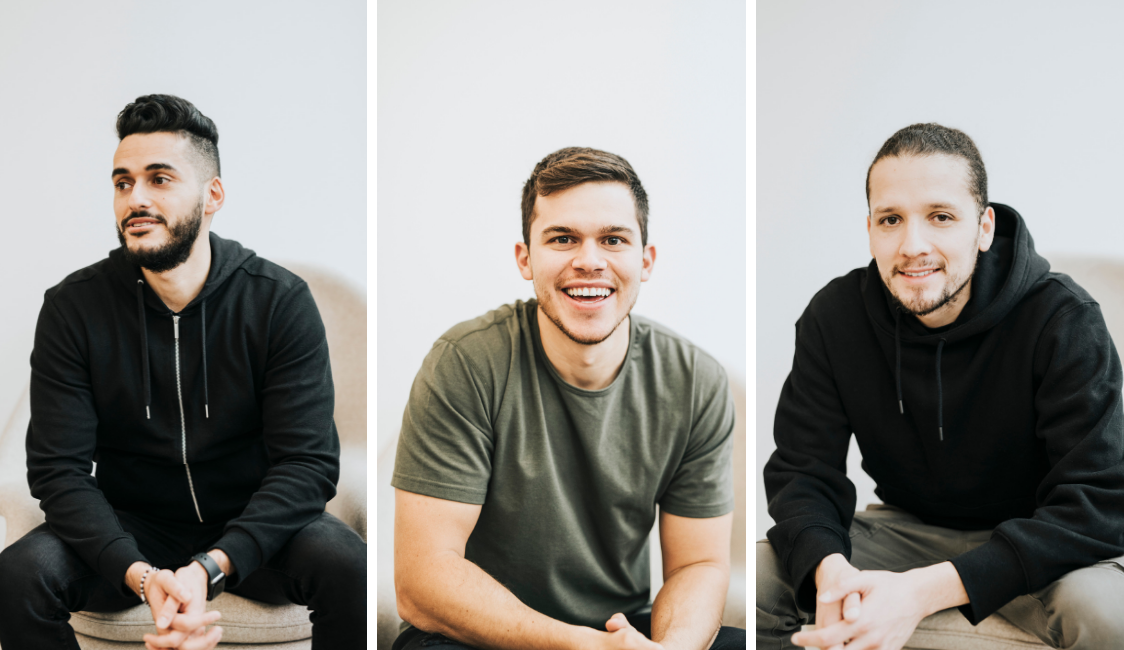This article was published in the Spring 2019 edition of Silicon Slopes Magazine.
By Hector Lopez, co-founder/CEO, Instasize
In many ways, I was beginning the American dream by going to college. My parents had immigrated to the U.S. from Mexico. They were hard workers, working lots of long hours at hourly jobs. While I never thought much about it as a kid, we didn’t have much. That didn’t matter, because we had a good home. Through my hard work and my parents’ hard work, I was able to go to college — the first one in my family. I wanted to be a doctor.
It was at the University of Utah that my friend, Eddy Homez, asked me if I wanted to start a company. Without overthinking it, I said, “Sure, let’s give it a try.” We dropped out of school in the winter to create a toothbrush subscription service, which turned out to be a bust. We were back to the drawing board by fall.
Even though we failed miserably, we continued looking for a real problem to solve. One problem that stuck out to us was the need to resize photos from the default, rectangular format to the square format for Instagram. So, Eddy, our friend Omar Arambula and I built an app that did just that. We called it Instasize. It launched on Black Friday of 2012, and we earned $7.
Early On: Do things that don’t scale
Paul Graham famously said, “Do things that don’t scale.” Early on, you can't wait for users to come to you. You really have to hang out where they are.
Our first few weeks mainly consisted of word of mouth downloads from family and friends. Seeing downloads from day one encouraged us to keep going and try different methods to get downloads.
To continue our growth, we took to Twitter. We asked ourselves, “How do we find other people with this problem?” We searched for keywords such as, “hate ig crop,” “instagram crop,” etc. Back then there was literally someone tweeting about this problem every few seconds.
Tweeting people App Store links quickly got us banned from our personal accounts. So, we started creating dozens of pseudo accounts to continue guerilla marketing. We kept this up manually non-stop, for a few months. It resulted in dozens of banned accounts, constant twitter support tickets to reopen and feedback on our initial product.
While initial traction was slow, the power of compounding eventually kicked in. Through our Twitter efforts and some initial enthusiastic customers, we achieved 6 million downloads in the Apple App Store that year.
Pivot quickly when you encounter a problem
Since the launch, Instasize was ad-supported with the ability to remove ads. Then we started offering in-app purchases, which gave us more traction. Product feedback we received allowed us to experiment with more features and charge for them.
In 2015, we had reached our highest number of downloads, and then in August, Instagram decided to allow full-sized photos — completely negating our core service. Once they launched the feature, our downloads dropped immediately by 40 percent.
We scrambled a bit, because we were watching our user base decline. Luckily, by this time we had a diverse set of editing tools to offer to our user base. Most of our new users would download Instasize for immediate resizing needs but stayed with us once we showcased other features such as filters, text, borders, and collages.
Two years later, after rebounding from this situation, we realized that an ad-supported model would not be sustainable. We noticed a major shift towards algorithmic feeds, which allows advertisers to access the platform at the expense of organic growth and exposure for creators. This sparked a need for visual tools to make the creator’s content stand out. This led us to ask the question “Would content creators be willing to pay for higher quality tools?” So, we decided to make the switch to a subscription service. The subscription model paved the way to reinvesting more resources back into our product without needing to focus on serving more ad impressions.
Over the last few months, we’ve been investing heavily back into our product functions that enable different types of content creation for various social platforms. Our biggest challenge is staying ahead of the curve and keeping the Instasize name relevant. We’ve learned to adapt quickly to external forces.
Lessons learned from building Instasize
Early on, one of the biggest mistakes we made was taking a blind approach and not A/B testing every development. Especially in the early days — don’t surrender to all of your gut instincts with no data to back up your opinions — the next feature update, design change, etc. We didn’t start A/B testing until early last year with Apptimize, which has been a lifesaver. Once you are at scale, even the smallest changes really affect your numbers.
On hiring, I would recommend you actively recruit year-round, keeping in touch with potential candidates, following up and seeing how things are going for them. You always want to be looking for bottlenecks in the company, getting feedback from the team about processes and how to speed things up. Most the time it usually involves getting more people to join the team. We’ve also had our fair share of hires who did not work out. Early hires are critical to building the company culture and foundation. If someone is not working out, you want to make sure to fire quickly. Mark Suster has a good article on hiring fast, firing fast.
In 2018, Instasize achieved $14 million in revenue and reached 12 million monthly users and 500,000 paid subscribers. It was downloaded 50 million times in the Google Play store and ranks in the Top 40 Photo/Video Apps in the Apple Store.
We’ve had some high-profile users such as Drake, Millie Bobby Brown, Charly Jordan, and Sommer Ray. In 2019, we think social creators will take control of their content. Many social networks are severely limiting the growth and discoverability of social creators through their search and discovery algorithms. For example, Instagram decides when to show your content and who gets to see it. These creators won’t stop using platforms like Instagram, but they’ll also want another place where they can be discovered, searched and not be so reliant on a platform that could one day be obsolete.
Final advice on starting a company or growing it: do it already. Stop over analyzing and start failing now — because failing is inevitable anyway. Overcoming loss and missteps are what make someone an entrepreneur.
There are people out in the world that care about and actively support Instasize. The development of the app and the daily decisions are of consequence. It’s good to know that we are a part of something that has value.


